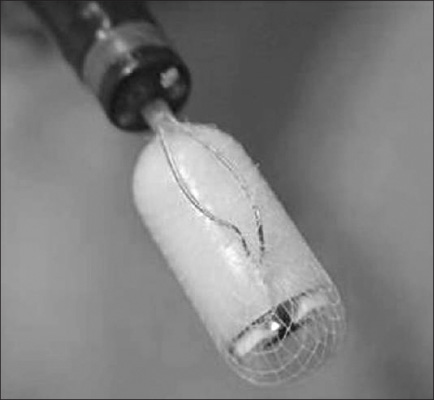Pediatr Gastroenterol Hepatol Nutr.
2012 Mar;15(1):8-12.
The Role of Capsule Endoscopy in the Diagnosis of Crohn's Disease
- Affiliations
-
- 1Department of Pediatrics, School of Medicine, Pusan National University, Yangsan, Korea. adboxone@gmail.com
Abstract
- The examination of small bowel in Crohn's disease (CD) is very important. Capsule endoscopy (CE) has been recognized as a good tool for evaluation of small bowel. The capsule placement is achieved endoscopically for Children not to swallow capsule. CE is superior to any other modalities for examination of small-bowel. The large portion of pediatric patients with known CD were found with CE to have more extensive and newly diagnostic small-bowel disease. All of them had therapeutic changes. The most side effect of CE is capsule retention. The capsule retention rate in pediatric CD is about 7.3%. The patency capsule helps to predict the possibility of capsule retention. For the improving of the diagnostic accuracy, the experience of more than 20 readings of CE is needed.
Keyword
Figure
Reference
-
1. Satsangi J, Silverberg MS, Vermeire S, Colombel JF. The Montreal classification of inflammatory bowel disease: controversies, consensus, and implications. Gut. 2006. 55:749–753.
Article2. Sauer CG, Kugathasan S. Pediatric inflammatory bowel disease: highlighting pediatric differences in IBD. Gastroenterol Clin North Am. 2009. 38:611–628.
Article3. Kim BJ, Song SM, Kim KM, Lee YJ, Rhee KW, Jang JY, et al. Characteristics and trends in the incidence of inflammatory bowel disease in Korean children: a single-center experience. Dig Dis Sci. 2010. 55:1989–1995.
Article4. Vernier-Massouille G, Balde M, Salleron J, Turck D, Dupas JL, Mouterde O, et al. Natural history of pediatric Crohn's disease: a population-based cohort study. Gastroenterology. 2008. 135:1106–1113.
Article5. Van Limbergen J, Russell RK, Drummond HE, Aldhous MC, Round NK, Nimmo ER, et al. Definition of phenotypic characteristics of childhood-onset inflammatory bowel disease. Gastroenterology. 2008. 135:1114–1122.
Article6. Park HJ, Lee SY, Ko JS, Seo JK. Usefulness of capsule endoscopy in children with suspected small bowel disease. Korean J Gastrointest Endosc. 2009. 39:346–351.7. Cohen SA, Gralnek IM, Ephrath H, Saripkin L, Meyers W, Sherrod O, et al. Capsule endoscopy may reclassify pediatric inflammatory bowel disease: a historical analysis. J Pediatr Gastroenterol Nutr. 2008. 47:31–36.
Article8. Ko JS. Capsule endoscopy in children. Korean J Pediatr Gastroenterol Nutr. 2010. 13:1–6.
Article9. Lim YJ, Moon JS, Chang DK, Jang BI, Chun HJ, Choi MG. Korean Society of Gastrointestinal Endoscopy (KSGE) guidelines for credentialing and granting previleges for capsule endoscopy. Korean J Gastrointest Endosc. 2008. 37:393–402.10. Kim HM, Kim YJ, Kim HJ, Park S, Park JY, Shin SK, et al. A pilot study of sequential capsule endoscopy using miroCam and pillCam SB devices with different transmission technologies. Gut Liver. 2010. 4:192–200.
Article11. Ben-Soussan E, Savoye G, Antonietti M, Ramirez S, Ducrotte P, Lerebours E. Is a 2-liter PEG preparation useful before capsule endoscopy? J Clin Gastroenterol. 2005. 39:381–384.
Article12. Albert J, Gobel CM, Lesske J, Lotterer E, Nietsch H, Fleig WE. Simethicone for small bowel preparation for capsule endoscopy: a systematic, single-blinded, controlled study. Gastrointest Endosc. 2004. 59:487–491.
Article13. Fritscher-Ravens A, Scherbakov P, Bufler P, Torroni F, Ruuska T, Nuutinen H, et al. The feasibility of wireless capsule endoscopy in detecting small intestinal pathology in children under the age of 8 years: a multicentre European study. Gut. 2009. 58:1467–1472.
Article14. Barth BA, Donovan K, Fox VL. Endoscopic placement of the capsule endoscope in children. Gastrointest Endosc. 2004. 60:818–821.
Article15. Bizzarri B, Fornaroli F, Cannizzaro R, de' Angelis N, Vincenzi F, Maffini V, et al. Endoscopic placement of video capsule in a pediatric population. Gastrointest Endosc. 2005. 62:991.
Article16. Kim KJ, Kim KM, Kim SC, Cho YM, Rho EJ. A Case of Capsule Endoscopy in a 42-month-old Girl. Korean J Gastrointest Endosc. 2008. 36:92–96.17. Dionisio PM, Gurudu SR, Leighton JA, Leontiadis GI, Fleischer DE, Hara AK, et al. Capsule endoscopy has a significantly higher diagnostic yield in patients with suspected and established small-bowel Crohn's disease: a meta-analysis. Am J Gastroenterol. 2010. 105:1240–1248.
Article18. Jensen MK, Tipnis NA, Bajorunaite R, Sheth MK, Sato TT, Noel RJ. Capsule endoscopy performed across the pediatric age range: indications, incomplete studies, and utility in management of inflammatory bowel disease. Gastrointest Endosc. 2010. 72:95–102.
Article19. Mehdizadeh S, Chen GC, Barkodar L, Enayati PJ, Pirouz S, Yadegari M, et al. Capsule endoscopy in patients with Crohn's disease: diagnostic yield and safety. Gastrointest Endosc. 2010. 71:121–127.
Article20. Li F, Gurudu SR, De Petris G, Sharma VK, Shiff AD, Heigh RI, et al. Retention of the capsule endoscope: a single-center experience of 1000 capsule endoscopy procedures. Gastrointest Endosc. 2008. 68:174–180.
Article21. Atay O, Mahajan L, Kay M, Mohr F, Kaplan B, Wyllie R. Risk of capsule endoscope retention in pediatric patients: a large single-center experience and review of the literature. J Pediatr Gastroenterol Nutr. 2009. 49:196–201.
Article22. Liao Z, Gao R, Xu C, Li ZS. Indications and detection, completion, and retention rates of small-bowel capsule endoscopy: a systematic review. Gastrointest Endosc. 2010. 71:280–286.
Article23. Cohen SA, Gralnek IM, Ephrath H, Stallworth A, Wakhisi T. The use of a patency capsule in pediatric Crohn's disease: a prospective evaluation. Dig Dis Sci. 2011. 56:860–865.
Article
- Full Text Links
- Actions
-
Cited
- CITED
-
- Close
- Share
- Similar articles
-
- The role of small bowel endoscopy in small bowel Crohn's disease: when and how?
- Role of capsule endoscopy in suspected or established Crohn's disease in real practice
- Retrieval of a Retained Capsule due to Isolated Crohn's Enteritis by Means of Double Balloon Enteroscopy
- Capsule Endoscopy in Children
- A Case of Capsule Retention for 31 Days Due to Stricture of Crohn's Disease



